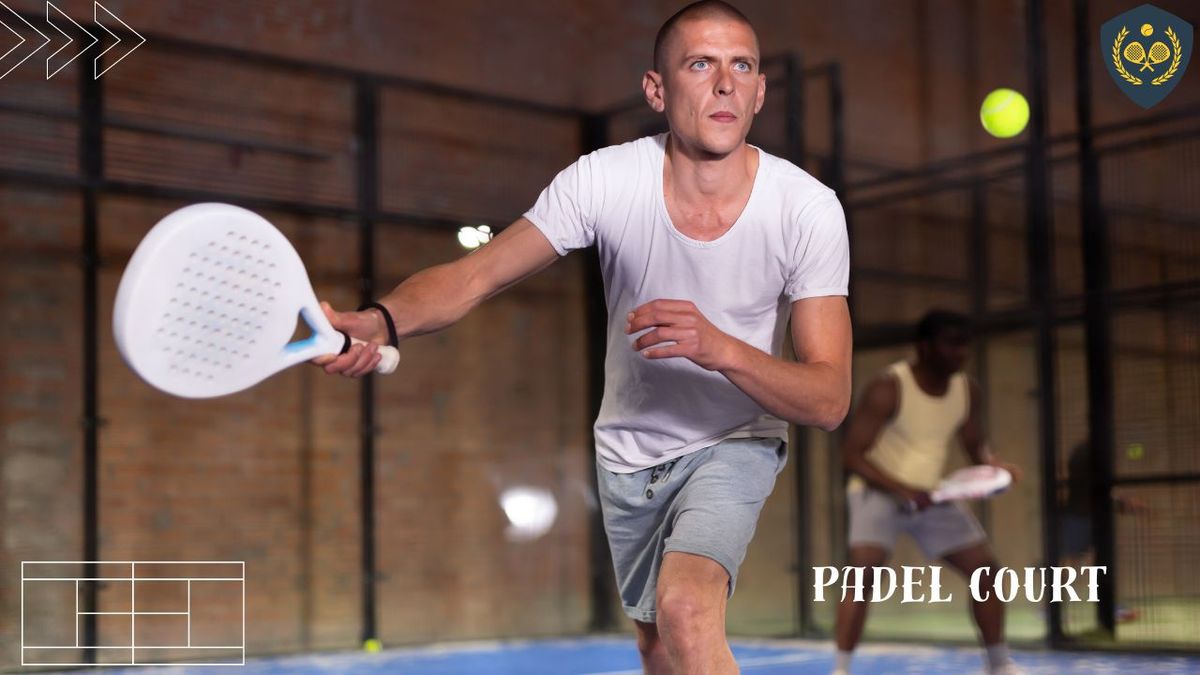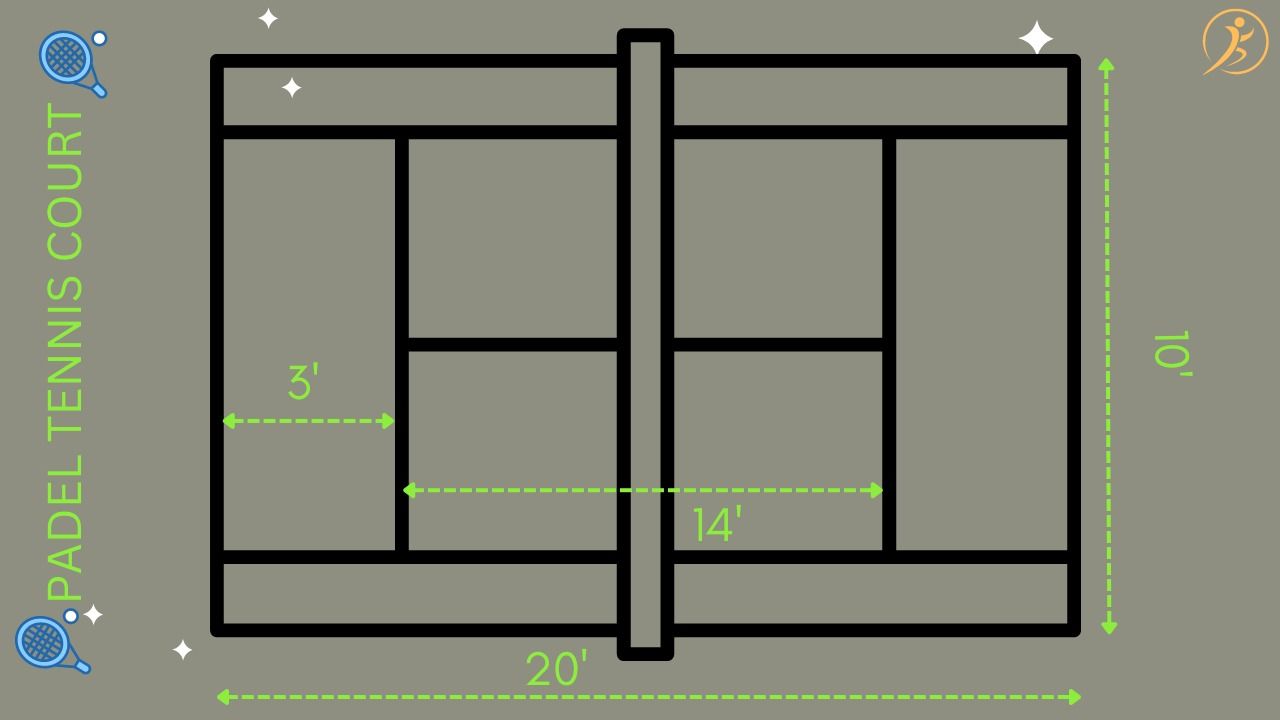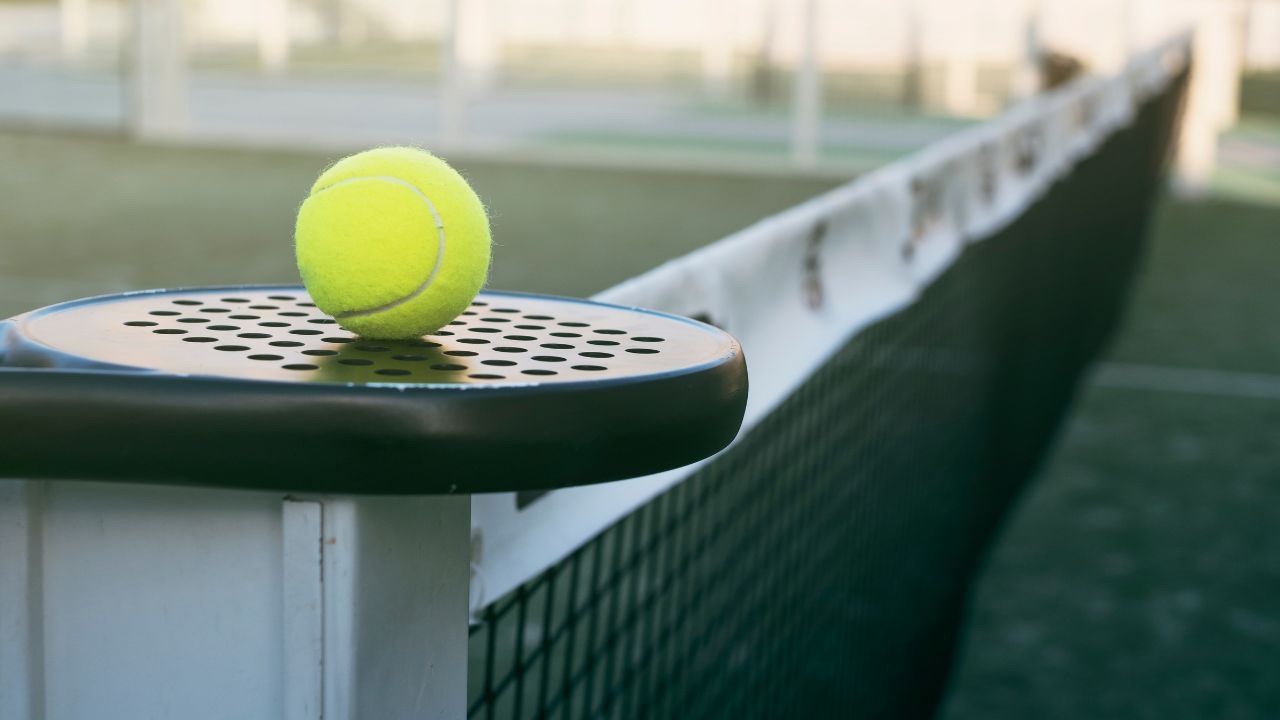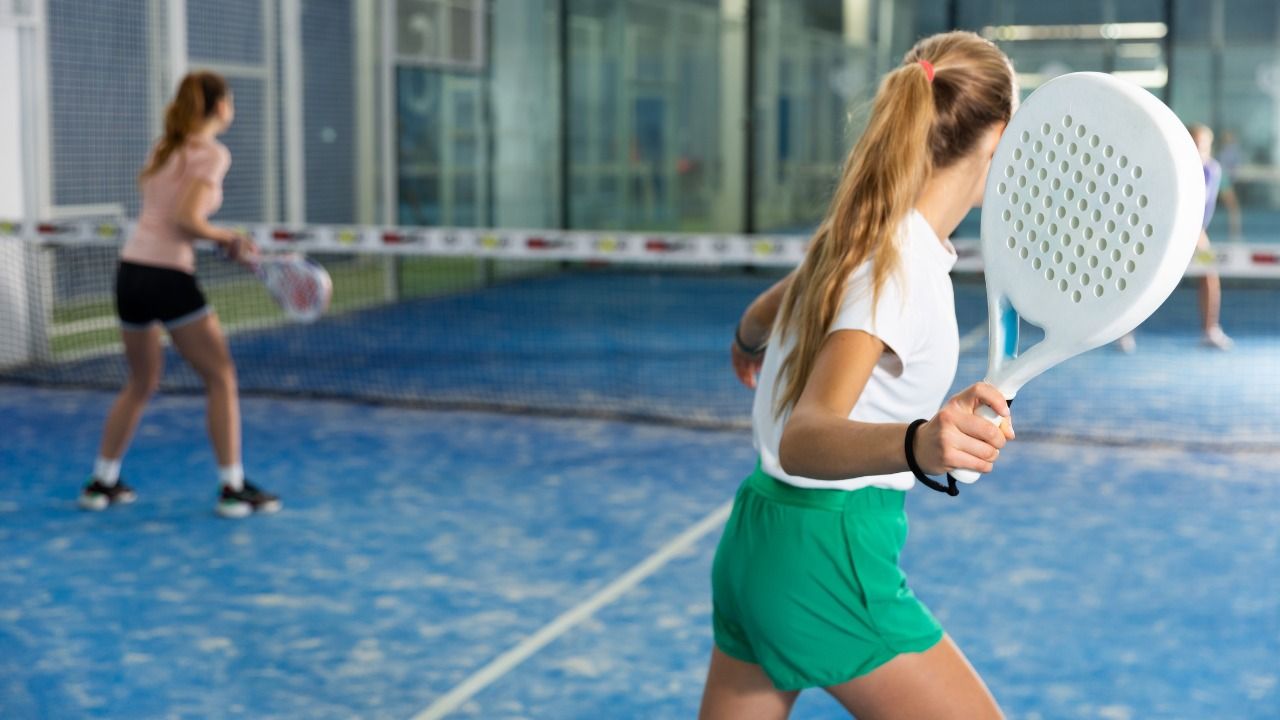Padel Court: The Thrilling Arena of Compact Racquet Sport
Explore the world of padel courts, where the compact dimensions and surrounding walls create a thrilling environment for fast-paced rallies and strategic gameplay.

Imagine a sport that's part tennis, part squash, and all entertainment, and you're diving headfirst into the thrilling universe of padel court.
Wondering what this quirky, enclosed arena is all about? In short, a padel court is the coolest thing to happen to racquet sports since they figured out that fuzzy yellow balls could bounce. Intrigued? Keep reading to uncover the secrets of the padel court, where fun and competition collide!
What Is Padel Tennis?
Padel tennis is often referred to simply as Padel. Padel is a mix of the best elements of squash and tennis played in doubles using the tennis scoring system.
Padel tennis is an inclusive, social, fast-moving, and fun sport for people of all abilities and ages. The walls ensure that padel rallies last much longer than tennis and include all the best parts of tennis - volleys, smashes, and lobs are the most common shots. It is typically played in doubles on a small, enclosed court with walls. Here are some key features of padel tennis:
- Court Design: Padel courts are smaller and enclosed, measuring about one-third the size of a tennis court. The dimensions are approximately 66 feet (20 meters) in length and 33 feet (10 meters) in width. The court is surrounded by transparent walls made of glass or wire mesh, and these walls are considered in play.
- Rackets: Padel rackets are solid with no strings and are perforated with holes. They are smaller and more compact than tennis rackets, with no longer handles. Padel rackets are designed for volleying and placing the ball strategically, rather than generating power through swings.
- Ball: Padel uses a pressurized ball that is similar in size and appearance to a tennis ball but is slightly smaller. The smaller ball, along with the enclosed court, leads to different playing dynamics compared to tennis.
- Scoring: Padel typically uses a simplified scoring system similar to tennis, but it's often played using no-advantage scoring, where a game is won by the first team to win four points with a margin of
Padel Court Dimensions
The dimensions of a padel court are standardized and regulated by the International Padel Federation (FIP). A padel court measures:
- Length: 20 meters (65.6 feet)
- Width: 10 meters (32.8 feet)

These measurements apply to the entire court, including both the playing area and the surrounding walls. Padel courts are enclosed on all sides by transparent walls, which are typically made of glass or wire mesh. The walls are considered in play, meaning that the ball can bounce off them and remain in play during a point.
The Padel Net
The padel net is a crucial component of a padel court, as it separates the two sides of the court and plays a significant role in gameplay. Here are some key features and characteristics of the padel net.

Height: The padel net is positioned at the center of the court, and it is typically set at a height of 88 centimeters (34.65 inches) above the playing surface. This height ensures that the net is low enough to encourage rallies and volleys but high enough to add a level of challenge to the game.
Construction: Padel nets are made of durable and weather-resistant materials to withstand outdoor conditions, as padel is often played in open-air environments. The net itself is usually constructed from nylon or similar synthetic materials.
Dimensions: The standard width of the padel net is 10 meters (32.8 feet), which corresponds to the width of the padel court. This width ensures that the net spans the entire court from side to side.
Net Posts: Padel nets are attached to net posts at each end of the court. These net posts are designed to be sturdy and securely anchored to the ground to keep the net taut and in the correct position during play.
Net Tension: The tension of the padel net is regulated to ensure that it is set at the correct height and remains consistent throughout a match. Proper tension is essential for fair and competitive gameplay.
Access To The Padel Court
- Public Facilities: Many cities and communities have public padel courts that are open to the general public. These courts may be available on a first-come, first-served basis, or you may need to make a reservation. Public facilities often charge a fee for court usage, and the fees can vary depending on the location.
- Private Clubs: Private sports clubs, fitness centers, and tennis clubs may have padel courts available for their members. Access to these courts usually requires club membership, and members may need to pay additional fees for court reservations or usage.
- Commercial Padel Centers: Some businesses specialize in padel and operate commercial padel centers. These centers offer court rentals to the public, and you can usually book court time in advance. They may also provide equipment rental services.
- Hotels and Resorts: In tourist destinations, hotels and resorts sometimes offer padel courts as part of their recreational facilities. Guests staying at these establishments often have access to the courts during their stay.
- Educational Institutions: Universities, colleges, and schools with sports facilities may have padel courts available to their students and staff. Access is typically limited to members of the educational institution.
- Membership Organizations: Some Padel associations and organizations offer memberships that grant access to affiliated Padel courts. These memberships may come with additional benefits, such as participation in tournaments and events.
- Online Booking Platforms: In some cases, you can book padel court time online through specialized booking platforms or apps. These platforms allow you to find available courts and make reservations conveniently.
Padel Court Lighting
Padel court lighting is a critical aspect of the game, as it ensures visibility and optimal playing conditions, especially for matches that extend into the evening.
Lighting Design: Padel court lighting is typically designed to eliminate shadows, glare, and dark spots on the court. The lighting should evenly illuminate the entire playing surface to ensure that players can see the ball clearly and react effectively.
Height and Placement: Lights are typically mounted on poles or structures surrounding the court, and their height and placement are crucial. The lights should be positioned at an adequate height to prevent interference with play while providing sufficient illumination.
Light Source: Padel court lighting commonly uses powerful and energy-efficient light sources, such as LED (Light Emitting Diode) fixtures. LED lights are preferred for their longevity, low energy consumption, and ability to provide consistent and bright illumination.
Intensity and Color Temperature: The intensity and color temperature of the lights are essential considerations. The lighting should have an intensity that meets or exceeds recommended standards, typically measured in lux (a unit of illuminance). The color temperature should provide a natural and comfortable viewing experience.
Control Systems: Many padel courts are equipped with lighting control systems that allow adjustments to the brightness and scheduling of the lights. This feature is useful for conserving energy when the courts are not in use.
Regulations: Lighting standards and regulations for padel courts may vary by location and governing bodies. It's important to ensure that the lighting installation complies with local regulations and the standards set by the International Padel Federation (FIP) or relevant national federations.
Cost and Efficiency: While investing in quality lighting is essential, it's also important to consider the cost of installation, operation, and maintenance. Energy-efficient lighting can help reduce long-term operational costs.
Environmental Considerations: Sustainable and eco-friendly lighting options are increasingly popular. LED lights are energy-efficient and have a lower environmental impact compared to traditional lighting technologies.
Padel Court FAQs
Q: What is the size of a Padel court?
Answer: The size of a Padel court is 20 meters in length and 10 meters in width. This translates to approximately 65.62 feet in length and 32.81 feet in width.
The court is enclosed by glass walls on all sides, typically measuring 3 meters (approximately 9.84 feet) in height. The court is divided into two halves by a net, and there is an 8-meter service box on either side of the net. The court is surrounded by a boundary fence with glass windows on the sides and the top of the fence.
Q: What are padel tennis courts?
Answer: Padel tennis courts are specially designed playing surfaces used for the sport of Padel tennis. Padel tennis is a racket sport that combines elements of tennis, squash, and badminton, played on a smaller court enclosed by glass walls. The courts have specific dimensions of 20 meters in length and 10 meters in width, with glass walls that are approximately 3 meters in height.
Padel tennis courts are divided into two halves by a net, and there are service boxes on both sides of the net. The sport is usually played in doubles, and players use solid paddles and a unique ball with holes, similar to a wiffle ball, to rally and score points.
Q: Can I play Padel on a tennis court?
Answer: Yes, it is possible to play padel on a tennis court with some modifications.
- Glass Walls: Padel courts have glass walls surrounding the playing area, which allow players to use them to bounce the ball during the game. Tennis courts lack these walls, so players need to adapt their gameplay to account for this difference.
- Screens or Fencing: To create a makeshift padel court on a tennis court, temporary screens or fencing can be installed along the sides and back of the court to mimic the glass walls of a padel court.
- Additional Markings: Padel courts have specific markings for the service boxes and service areas, which are different from the markings on a tennis court. Temporary markings can be added to the tennis court to indicate the correct areas for serving in the padel.
- Equipment: While playing padel on a tennis court, players would need to use padel paddles and a padel ball instead of tennis rackets and tennis balls.
- Adapted Gameplay: The absence of glass walls and the differences in court markings may slightly alter the gameplay and strategy in Padel when played on a tennis court.
Q: Is padel court the same as tennis?
Answer: No, a padel court is not the same as a tennis court. While both sports are played on rectangular courts with a net dividing the playing area, there are significant differences between the two:

- Court Size: Padel courts are smaller than tennis courts. A standard padel court is 20 meters in length and 10 meters in width, whereas a tennis court is 23.77 meters in length and 8.23 meters in width for singles play and 10.97 meters in width for doubles play.
- Enclosed Walls: Padel courts have glass walls that enclose the playing area on all sides. In contrast, tennis courts have no walls, and the ball must stay within the court boundaries defined by lines.
- Playing Surface: Padel courts typically have an artificial grass or artificial turf surface. Tennis courts can have various surfaces, including grass, clay, hard court (concrete or asphalt), or carpet.
- Scoring System: Padel uses the same scoring system as tennis but with a few differences. For example, the serve in padel is underhand, and points are announced in Spanish (love, 15, 30, 40).
- Paddles vs. Rackets: Padel players use paddles, which are solid and perforated, similar to small tennis rackets. Tennis players use traditional tennis rackets with strings.
- Serving: In padel, the serve must be directed diagonally into the opponent's service box, whereas in tennis, the serve can be directed anywhere within the service box.
- Ball: Padel uses a unique ball with holes, similar to a wiffle ball, which is different from the standard tennis ball used in tennis.
Q: What are padel walls made of?
Answer: Padel walls are typically made of glass or a combination of glass and metal frames. The glass used for padel walls is specially designed to be strong, durable, and shatter-resistant. The thickness of the glass can vary, but it is usually around 10 to 12 millimeters (approximately 0.39 to 0.47 inches) to withstand the impact of the ball during gameplay.
The glass walls are an essential and unique feature of padel courts. They allow players to use the walls to bounce the ball, adding an extra element of strategy and excitement to the game. The glass walls also provide spectators with a clear view of the action on the court, making padel a spectator-friendly sport.
The combination of glass and metal frames provides stability and support to the walls, ensuring they remain secure and intact during intense rallies and matches. The use of glass walls in padel courts is one of the key characteristics that distinguish padel from other racket sports and contributes to the fast-paced and dynamic nature of the game.
Key Takeaways!
Our Featured Partner

